All about speaker cones
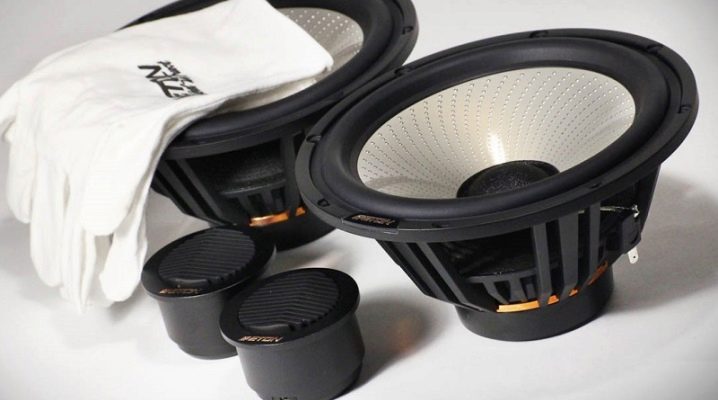
The diffuser, along with the voice coil and magnet, is the third important component of the electrodynamic head. If you remove it, then you are unlikely to hear sounds coming from the bass amplifier.
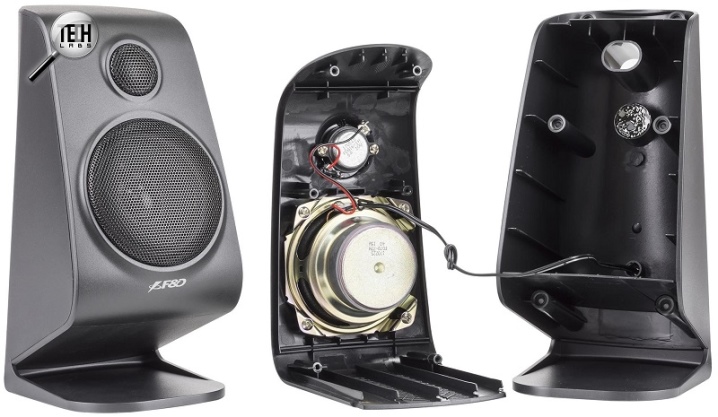
What is it and why is it needed?
Without a diffuser, the speaker will not be able to emit distinct sounds. In fact, it is a "loudspeaker dish" vibrating with the frequency of high-frequency currents flowing through the speaker coil and changing faster according to the law of the transmitted radio message. For a subwoofer, the recommended frequencies are limited to a range of 20-300 Hz. An electrical signal from an amplifier with a frequency higher than 300 Hz is not reproduced efficiently enough. For higher frequencies, so-called satellites are used - more broadband speakers, inferior to the "bass driver" in size and overall power.
Speakers containing both satellites and a subwoofer are designed for the highest quality sound reproduction. Accordingly, the subwoofer diffuser should be more powerful, larger in area, thicker, for example, have a rubberized technological layer and be made of high-quality cardboard with a special polymer impregnation.
The larger the area, the higher the diameter of the diffuser.
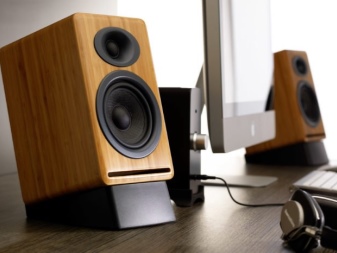
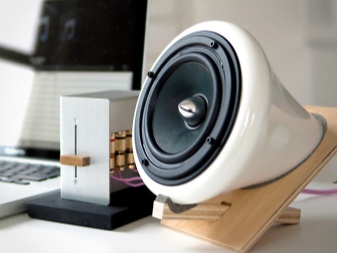
Varieties
But not only cardboard-polymer diffusers are used in the most powerful speakers for tens and hundreds of watts. So, aluminum perfectly dampens resonance at frequencies from tens to hundreds of hertz, but at a frequency of 4-20 kilohertz, on the contrary, it emits a parasitic harmonic, which is a consequence of resonance in a "higher" band. Along with high rigidity, it is durable. The same can be said for drivers with magnesium, beryllium diffusers - these components are installed in (semi) professional acoustics.
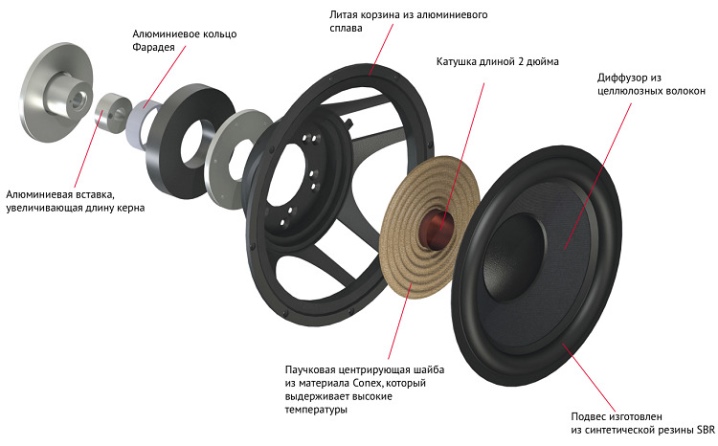
The paper diffuser is necessarily impregnated with special components, which include polymer fillers. They seal the material that makes up the cellulose diffuser. The advantage of a paper (or cardboard) diffuser is its low distortion factor: the sound is transmitted most naturally.
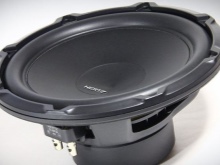
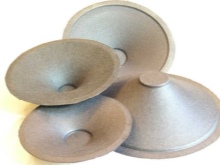

Disadvantages - power limitation (no more than ten-plus watts), sensitivity to precipitation and dampness. In bad weather, during the operation of such speakers on the street, speakers with paper cones quickly crumple and fail.
Composite, metal, kevlar, polypropylene (or polyurethane), carbon fiber diffusers are devoid of all these disadvantages. Their frequency characteristics differ markedly, but this does not prevent manufacturers from improving characteristics by changing the overall speaker design.
Headphones, for example, have never used paper cones - they have been replaced with plastic membranes.

Impregnation
To protect, for example, a paper speaker from breaking the diffuser, impregnations prepared on the basis of organic solvents are used. So, for the central part responsible for high frequencies, transparent plastic is used, dissolved in dichloroethane.
For the intermediate, responsible for medium frequencies, - rubber glue in white spirit (by weight of glue - a quarter of the total weight of the composition). The extreme part is impregnated with a composition based on automotive sealant. After mixing the components, saturate the diffuser so that no dripping protrusions remain on its surface - the coating should be uniform and uniform.
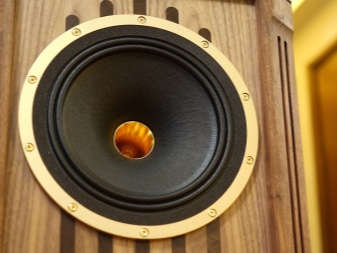
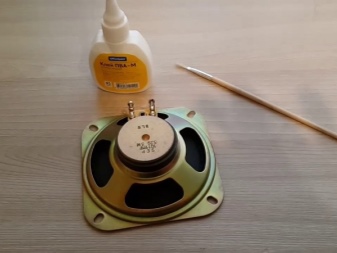
The interval between coats of impregnation is from 4 to 15 minutes: it is necessary to allow the previous coat to soak before applying the next one. The final drying time for the coating to "settle" is a month, with the diffuser facing up. Previous poor-quality, uneven impregnation could irreversibly spoil the sound of the speaker, in this case there is a technological violation, as well as an overkill or economy of materials for impregnation.
Mineral oils, bitumen, petroleum jelly and other impregnations must not be applied. Even PVA glue would not help here. In the best case, the result will be zero, in the worst case, the speaker can be irreversibly damaged by poor-quality or inappropriate impregnation. High quality impregnation should be at least two layers.
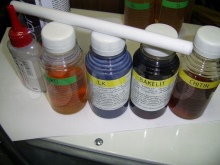
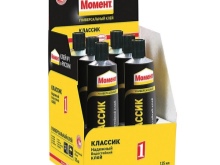
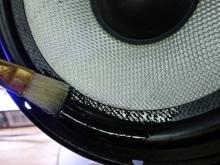
Repair features
With your own hands, straightening the crumpled, glue the paper diffuser, which was accidentally pierced with a screwdriver or knife in the glove compartment, where the speaker grill is located, is quite easy. To do this, use glue "Moment-1" or similar, which is suitable for gluing not only paper, but also rubber, wood and metals. It is necessary to repair the torn diffuser in advance, until the gap becomes continuous or does not increase. If you don't have glue on hand, you can use, for example, nail polish - it also has good adhesive properties.
First, a patch of the desired size is cut out - it should cover the gap with a margin. The surface of the rupture site must be free of dirt and foreign particles, it can also be degreased, for example, with ethyl alcohol. The surfaces to be glued must be stationary, make sure that the speaker (or the speaker itself in the system) is temporarily disabled before starting work. Powerful speakers are sealed with several layers of paper or even cardboard.
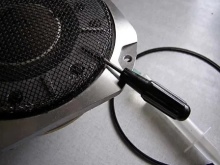
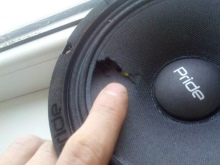

After gluing, the paper is coated with a polymer composition that has sufficient elasticity, since a coating that hardens to a hard state can deteriorate the frequency characteristics of the diffuser. It is important that the diffuser is waterproof to protect it from repeated jams and tearing of the paper shell.
There are also times when a low-quality Chinese speaker could be improved by improving its rigidity with the right impregnation to strengthen the cone. A thin diffuser can be thickened - for example, the paper one is additionally reinforced with several additional layers of paper impregnated with a polymer adhesive base. It is better to entrust rubberized, rubberized diffusers to the restoration by specialists: for example, it is difficult to fix the vulcanization of a torn rubber edging of a powerful "bass driver" at home.
It is not a fact that you will succeed, using raw rubber, to perform, for example, vulcanization with a soldering iron on the first attempt. Gluing the same pieces of rubber will not only disfigure the speaker outwardly, but also will not restore its original sound to the factory characteristics.

For information on what depends on the material of the acoustics diffusers, see the next video.













The comment was sent successfully.